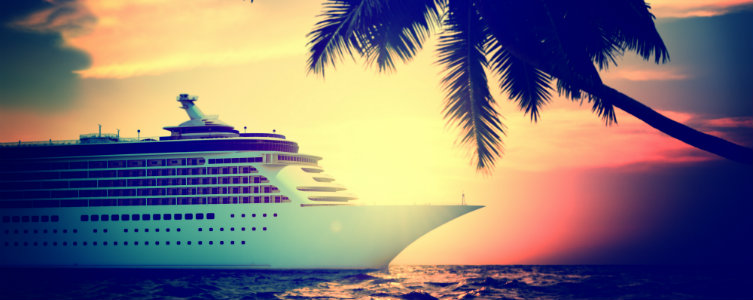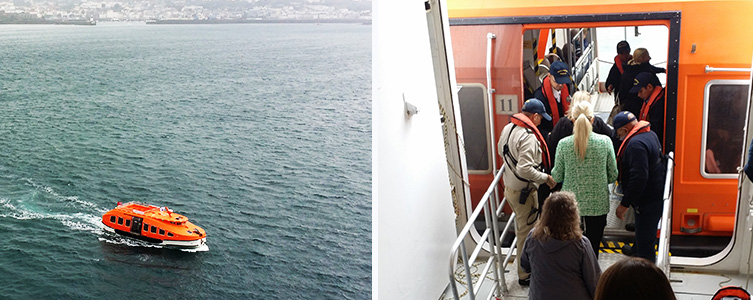Updated October 2017
So you want to book your first cruise and don’t really understand the lingo? Or you aren't a seasoned cruiser and want to appear like you know more? Check out some of the common terms below, and a simple explanation for each of them.
After getting to grips with these, you’ll be ready to step onboard with confidence and travel some of the world’s most fantastic destinations.

Some cruise ships are very large, and can therefore be a bit of a maze for beginners. If you understand the points of the ship, you have a better chance of not getting lost. The bow is the front, and the aft is the back of the ship. The starboard is the right side of the ship when facing forwards, and the port is the left side. It really is as simple as front, back, left, and right once you know the correct words.
Not many would expect an exotic or luxury holiday to start from the UK, but the world is at your doorstep when sailing from ports like Southampton. Ex-UK means sailing straight from a port in the UK, and is also referred to as 'cruise only'. You can begin your journey at your local port, not having to worry about flight times, baggage allowance, or busy airports.
The term 'guarantee cabin' is slightly confusing, as it can actually be a bit of a gamble. With a guarantee cabin you do not get to pick the location of your cabin, nor find out your cabin number until near the time of embarkation. They are usually priced with a bit of a discount, and can even result in a complimentary upgrade if you're lucky.
![]()
A knot is a measure of a ship’s speed; one knot is equal to around 1.15 land miles (mph). Typically the average cruise ship travels at around 30 knots - which would be almost 35 mph - but for larger ships it’s between 21 and 24 (24 - 28 mph).
It is important that you understand what to do in an emergency at sea, and so a muster drill is held at the start of each and every cruise. You’ll be shown what to do and where to go. The muster station is the assembly point in case of an emergency and/or when the bell sounds. This is where you’ll be guided to a lifeboat and safety.
Onboard credit is an exciting term as it is essentially free money to be used on the cruise; whether it be in the spa, on drinks, or an excursion. It is often given to add value to cruises and create a reason to book, an added bonus, or even compensation.
![]()
Cruise ships will often do a season at a certain destination before moving on to their home for the next season, and you can be onboard for the sailing. This is called a 'repositioning cruise' and has many days at sea, but can usually be offered at great value.
Some ports are much smaller or too busy to sail into, so require tendering. This means your cruise ship will drop anchor away from port, and smaller boats will transport you from your ship to the shore.

If you like structure, consider traditional dining. This means that you eat at the same time, with the same people, at the same table, and are being served by the same waiting staff. Great if you want to strike up a friendship with familiar faces.
![]()
A Transatlantic cruise is essentially a voyage that crosses the Atlantic Ocean between America and Europe. These are great for people who don't like flying, and those who seek to spend time onboard fantastic ships with brilliant facilities.
So you want to book your first cruise and don’t really understand the lingo? Or you aren't a seasoned cruiser and want to appear like you know more? Check out some of the common terms below, and a simple explanation for each of them.
After getting to grips with these, you’ll be ready to step onboard with confidence and travel some of the world’s most fantastic destinations.

Bow, Aft, Starboard & Port
Some cruise ships are very large, and can therefore be a bit of a maze for beginners. If you understand the points of the ship, you have a better chance of not getting lost. The bow is the front, and the aft is the back of the ship. The starboard is the right side of the ship when facing forwards, and the port is the left side. It really is as simple as front, back, left, and right once you know the correct words.
Ex-UK
Not many would expect an exotic or luxury holiday to start from the UK, but the world is at your doorstep when sailing from ports like Southampton. Ex-UK means sailing straight from a port in the UK, and is also referred to as 'cruise only'. You can begin your journey at your local port, not having to worry about flight times, baggage allowance, or busy airports.
Guarantee Cabin
The term 'guarantee cabin' is slightly confusing, as it can actually be a bit of a gamble. With a guarantee cabin you do not get to pick the location of your cabin, nor find out your cabin number until near the time of embarkation. They are usually priced with a bit of a discount, and can even result in a complimentary upgrade if you're lucky.
Knot
A knot is a measure of a ship’s speed; one knot is equal to around 1.15 land miles (mph). Typically the average cruise ship travels at around 30 knots - which would be almost 35 mph - but for larger ships it’s between 21 and 24 (24 - 28 mph).
Muster Drill & Muster Station
It is important that you understand what to do in an emergency at sea, and so a muster drill is held at the start of each and every cruise. You’ll be shown what to do and where to go. The muster station is the assembly point in case of an emergency and/or when the bell sounds. This is where you’ll be guided to a lifeboat and safety.
Onboard Credit
Onboard credit is an exciting term as it is essentially free money to be used on the cruise; whether it be in the spa, on drinks, or an excursion. It is often given to add value to cruises and create a reason to book, an added bonus, or even compensation.
Repositioning Cruise
Cruise ships will often do a season at a certain destination before moving on to their home for the next season, and you can be onboard for the sailing. This is called a 'repositioning cruise' and has many days at sea, but can usually be offered at great value.
Tendering
Some ports are much smaller or too busy to sail into, so require tendering. This means your cruise ship will drop anchor away from port, and smaller boats will transport you from your ship to the shore.

Traditional Dining
If you like structure, consider traditional dining. This means that you eat at the same time, with the same people, at the same table, and are being served by the same waiting staff. Great if you want to strike up a friendship with familiar faces.
Transatlantic
A Transatlantic cruise is essentially a voyage that crosses the Atlantic Ocean between America and Europe. These are great for people who don't like flying, and those who seek to spend time onboard fantastic ships with brilliant facilities.
We often host ship visit days where you can take a look around and experience the dining before making any decision. View our upcoming ship visits here.
Feeling more confident about booking your first cruise? Why not take a look at our top 10 cruise deals.
Back to cruise guides and features
Go
